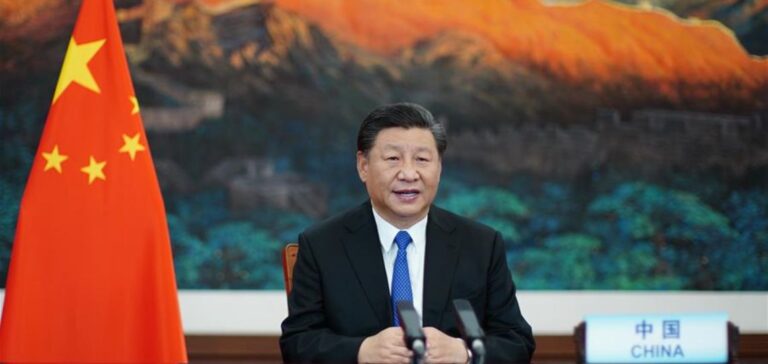China’s ambition to be carbon neutral by 2060 was announced on September 22 by President Xi Jinping. It was during the UN General Assembly that China unveiled its new “green revolution” ambitions, to the surprise of other member countries.
The ambition of carbon neutrality for the world’s largest emitter
With 28% of global carbon emissions, China is the world’s biggest emitter of greenhouse gases. The majority of these emissions come from electricity generation, the main primary energy source of which is coal (66% of Chinese production). At the Paris Accords in 2015, China presented emission reduction targets, aiming for a peak around 2030.
At the end of September, President Xi Jiuping raised the bar by announcing that he wanted to reach the peak before 2030 and then reduce emissions until carbon neutrality was achieved in 2060. This promise was eagerly awaited by the members of the European Union, who have themselves announced that they will be carbon neutral by 2050.
“Humanity can no longer afford to ignore nature’s repeated warnings and take the beaten path of resource extraction without investing in conservation, nor can it afford to pursue development at the expense of resource protection and exploitation without restoration.” Xi Jiuping, UN GA Sept 22 2020
Following the Paris Agreements, if all nations were to keep their emission reduction promises, global warming would be 2.7°C above pre-industrial temperatures by the end of the century. According to Carbon Brief ‘s calculations, China’s carbon neutrality by 2060 would reduce this value to 2.45°C. This new target could prevent the emission of 215 billion tonnes of CO2 over the next forty years.
The positive impact of carbon neutrality on the Chinese economy
Despite the high cost of decarbonization, estimated at $250/tCo2, the transition to carbon neutrality would be an economic opportunity for China. Xi Jiuping has announced that China is banking on the renewable energy industries to revive the economy after the coronavirus pandemic. Strong investment in the energy transition over the next few years would boost China’s GDP by 5% by the end of the decade.
Indeed, China is the world leader in renewable energy power generation technologies. It is the world’s largest producer, exporter and installer of solar panels and wind turbines. China also dominates the electric vehicle market. Major industry groups such as China Ressources Power Holdings and China Huaneng Group have invested heavily in these markets recently.

The increase in GDP would also result from the reduction in imports of fossil fuels. China is currently the world’s largest importer of coal, oil and natural gas.
However, this economic growth would not be evenly distributed across the country. Coal industry workers in the provinces would be most affected by the new carbon neutrality measures.
Long-awaited roadmap to carbon neutrality
Concrete measures to achieve carbon neutrality have yet to be announced by President Xi Jiuping. It plans to rely on energy efficiency regulation, carbon tax policy, technological improvement and the closure of coal-fired power plants.
A group of researchers from Tsinghua University has presented a 30-year transition plan with a budget of $15 billion. To achieve neutrality, we need to reduce the use of fossil fuels in electricity generation and transport.
Electricity will have to account for 80% of final energy and come from renewable or nuclear sources. Decarbonized electricity production will go hand in hand with the development of electric vehicles to decarbonize transport. The production of green hydrogen will also play an important role in reducing transport-related emissions (target of 1 million hydrogen-powered cars by 2030), as well as in the storage of renewable energies.
The Chinese government’s detailed action plan is eagerly awaited, and will serve as a roadmap for other nations.
China struggles to move away from coal
New coal-fired power plants under construction
Despite the Chinese president’s stated intention to replace coal-fired power plants with renewable energy sources, the installed capacity of coal-fired power plants continues to grow.
In 2019, the total installed capacity of coal-fired power plants was 1050 GW. To date, a further 100 GW are under construction, and more building permits for power plants have been issued since the health crisis than in 2018 and 2019 combined. The economic recovery from the coronavirus seems to be mainly driven by the opening of new power plants.
However, according to a study by Lauri Myllyvirta, a researcher at the Helsinki Centre for Energy and Clean Air Research, Chinese coal-fired power plants are oversized, operating at only 50% of capacity. They are often not profitable. The sole purpose of installing these plants is to boost the economy at the time of construction.
To date, 3.5 million people work in China’s coal industry.

The difficulties of developing low-carbon energies
The operating time, intermittency and storage difficulties of renewable energies pose technical challenges to the integration of renewable electricity into the distribution grid. The increase in nuclear power generation, meanwhile, is held back by the fear of a nuclear disaster like the one at Fukushima in 2011. Nuclear power plants arouse a great deal of public opposition, and new safety measures make them expensive.
The global impact of carbon neutrality in China
China is the biggest player in the energy market. The announcement of carbon neutrality by 2060 is very important for the global energy transition.
Financial investments that will benefit the global energy transition
The investments China will have to make to achieve carbon neutrality through the development of renewable energy technologies will benefit the whole world. Improvements in technology and efficiency will drive down the cost of renewable energies. When they become economically competitive with fossil fuels, their worldwide development will be facilitated.
Geopolitical strategy vis-à-vis the United States
China shares the podium of the world’s highest CO2 emitters with India and the United States. In a context where President Trump has withdrawn from the Paris Agreements, attributing all responsibility for global warming to Chinese activities, President Xi’s announcement comes as a resistance to the American president’s will.
President Xi Jiuping, for whom environmental protection is an important objective of his term of office, calls on all UN countries to boost their economies through economic transition. Member countries are awaiting concrete action from their governments.





















